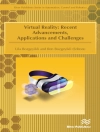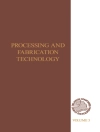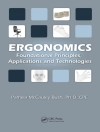The ‘materials nexus’ represents the role or connection of materials in building the path for greener energy and sustainable environment. This two-volume set covers the state-of-the-art of materials technology for greener energy and sustainable environment, including current issues, anticipated demands, and future opportunities. Each chapter demonstrates how advanced materials can be selected and prepared for device applications, providing a vital link between the science and the engineering applications. Technologies covered include functional electrode materials in energy harvesting including solar cells, solar water oxidation, fuel cells, supercapacitors, batteries and sensors, and environmental remedial applications. This reference text is highly useful for students, researchers and companies who are searching for suitable materials for energy and environmental applications.
Key Features
- Covers the cutting edge in materials technology for greener energy and sustainable environment, including current issues, anticipated demands, and future opportunities.
- Introduces the fundamentals and applications in energy conversion, generation, storage, and environmental remediation.
- Discusses the basic principles and mechanism behind materials selection.
- Provides a framework for the functional and technological aspects of the materials to guide researchers in their corresponding engineering applications.
- Demonstrates how advanced materials can be selected and prepared
for device applications.
Inhoudsopgave
1 A sustainable energy transition to build a safer future: an introduction
2 Thin-film-based functional materials for solar cell applications
3 An overview of noble-metal-free nanostructured electrocatalysts for overall water splitting
4 The state-of-the-art of solid sorbents for carbon capture applications: opportunities and future perspectives
5 MOF-based electrocatalysts for oxygen evolution reactions
6 Hierarchical nanostructured functional materials for flexible supercapacitors
7 Sulfide-based 2D nanomaterials for photocatalytic activity
8 Recent progress in transition metal nitrides for electrochemical and photocatalytic applications
9 Recent developments in metal nanoparticle-based electrochemical biosensors for medicinal applications
10 Two-dimensional (2D)-nanolayer based functional materials in the advanced oxidation process
11 Nanostructured graphitic carbon nitride for remediation of environmental contaminants
12 Integrating algae in personal care product and cosmetic industrial wastewater treatment—an approach to enhance the circular economy with value-added products
Over de auteur
Prof. Mangalaraja Ramalinga Viswanathan is a Full Professor in the Faculty of Engineering and Sciences, Universidad Adolfo Ibáñez, Chile. He was previously at the University of Concepcion for 18 years, where he also worked as the Director of International Relations from 2018–2019 and as the Director for the Department of Materials Engineering from 2010–2016.
Dr. Arulraj Arunachalam is an Assistant Professor in the Departamento de Electricidad at Universidad Tecnológica Metropolitana, Santiago, Chile. He was previously at the Faculty of Engineering and Sciences at the Universidad Adolfo Ibáñez, Chile, where he worked as the FONDECYT Postdoctoral Researcher. Dr. Arulraj gained his Ph.D. in Technology (Energy) from Anna University, India.
Dr. N. Pugazhenthiran is an Assistant Professor of Chemistry at the Universidad Técnica Federico Santa Maria, Chile. He obtained his Ph. D., in Chemistry at Madurai Kamaraj University, India in 2014. He has previously received four research grants from ANID-FONDECYT and ANID-FONDEF, the Government of Chile.
Prof. Chan Siew Hwa is a President’s Chair in Energy and Full Professor at Nanyang Technological University (NTU), Singapore. He joined NTU in 1991 after obtaining his Ph D and working as a post-doctoral researcher at Imperial College London. He leads the hydrogen and fuel cell research at Energy Research Institute at NTU. He has received several awards and is listed among the World’s Most Influential Scientific Minds by Thomson-Reuters.












